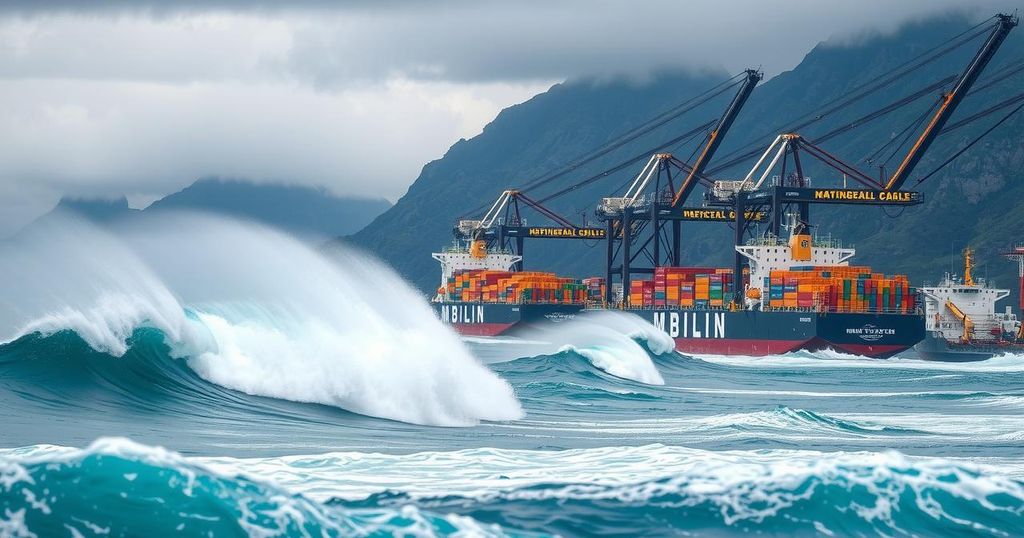Severe Coastal Waves Devastate Peru and Ecuador, Prompt Safety Warnings

Massive waves reaching as high as 13 feet have struck the coasts of Peru and Ecuador, prompting government warnings and the closure of over 100 seaports. The phenomenon, linked to climate change, has resulted in the loss of fishing vessels and casualties, with at least two people confirmed dead in Ecuador. The adverse impacts have disrupted local businesses during the holiday season.
Officials in Peru and Ecuador continue to advise the public to steer clear of the coastline as unprecedentedly high waves wreak havoc on the shoreline, encroaching inland. This maritime disturbance commenced on Christmas Day, peaking on December 27 and 28, with expectations of continuation until at least January 4. Reports indicate that wave heights have surged to approximately 13 feet, severely impacting fishing communities, tourism sectors, and flooding areas including Callao.
In response to these severe conditions, the Peruvian government has closed around 100 of its 121 seaports. The northern coastal regions bear the brunt of the devastation, where the Navy has executed rescues of at least 30 fishermen trapped at sea, while numerous others remain stranded. A particular fishing community reports significant losses with at least 100 vessels unaccounted for. In light of these events, Navy Captain Enrique Varea expressed concerns that the wave intensity may escalate further.
Forecasts indicate a moderation in wave activity by early January; however, the impact on coastal regions is expected to persist. Civil Defense officials have attributed this rare phenomenon to climate change, explaining that an amalgamation of exceptionally strong winds from distant areas, including the United States, and unusually high tides are contributing factors. These officials dismissed notions of a tsunami or freak wave, emphasizing that this is a sustained weather pattern. They further predict that similar climatic occurrences may rise due to global temperature increases.
In addition to the wave-related catastrophes, Peru is also addressing an environmental emergency following an oil spill that affected approximately 10,000 square meters of surface water, damaging several local beaches and wildlife. The holiday season, typically vibrant for coastal tourism, has suffered significantly as waves have inundated tourist destinations, leading to business failures. Tragically, reports have confirmed two fatalities in Ecuador, while a body was discovered on the Chilean coast, amidst unverified accounts of casualties in Peru.
The coastal regions of Peru and Ecuador are currently experiencing a significant meteorological event characterized by unusually high waves, a situation that poses serious risks to public safety and local economies. This phenomenon, attributed largely to climate change and altered weather patterns, has highlighted vulnerabilities in these regions, especially during the holiday period traditionally marked by increased tourism. The impact of elevated wave heights extends beyond immediate threats to human life; it has also compounded existing environmental issues, such as the recent oil spill affecting regional waters.
The high waves affecting Peru and Ecuador underscore the urgency of addressing climate change and its related repercussions on coastal communities. As the situation unfolds, officials are urged to continue prioritizing public safety measures and taking proactive steps in disaster management and environmental protection. Ultimately, the interplay between weather patterns and human activity necessitates a focused response to mitigate future risks and safeguard coastal populations.
Original Source: www.maritime-executive.com








